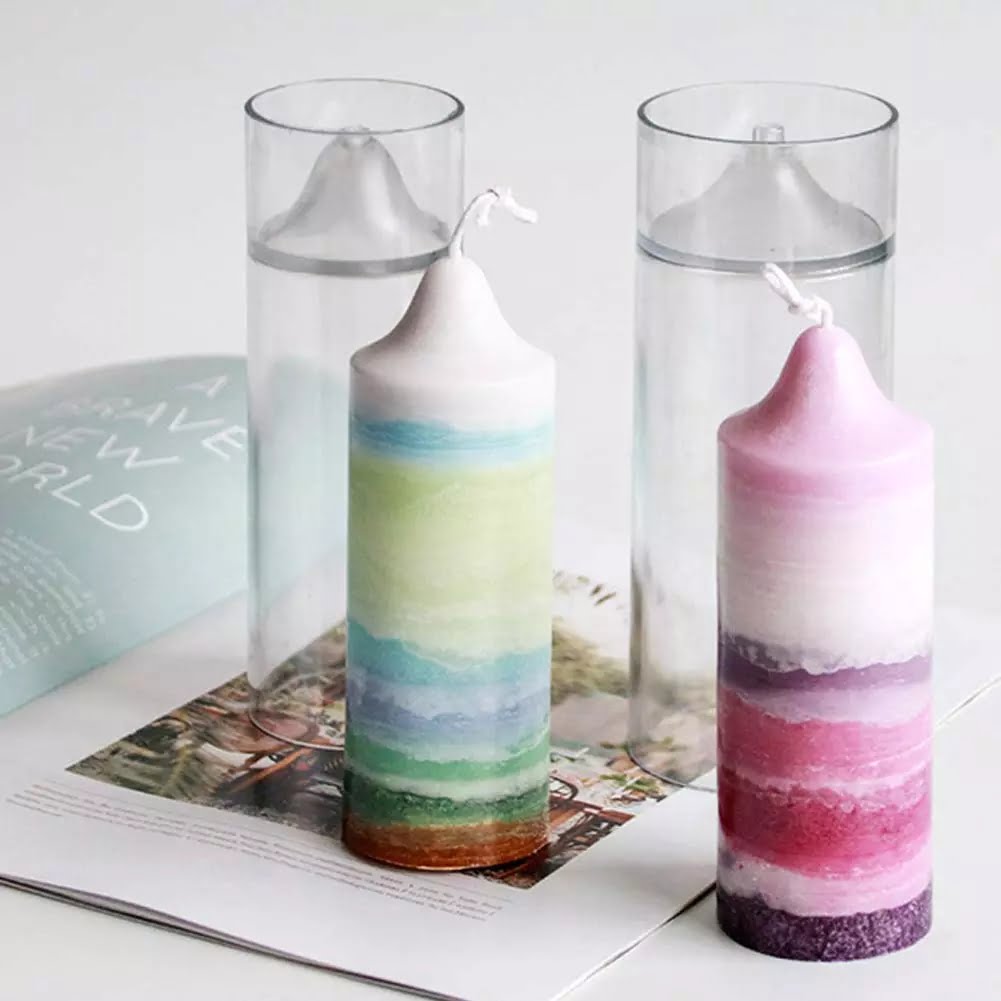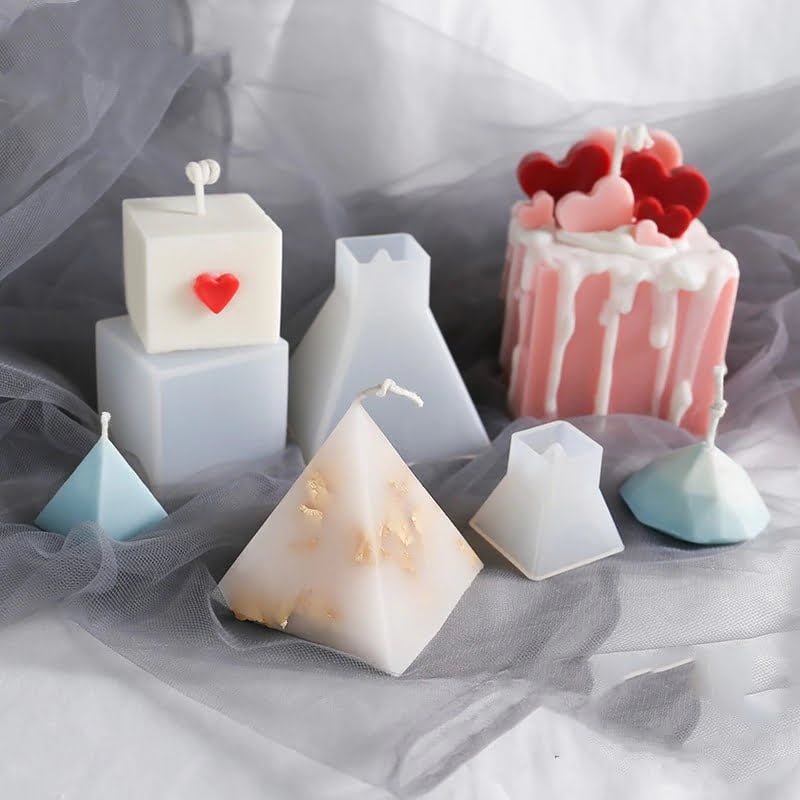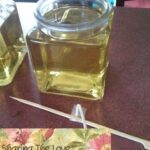Candle making is an art that requires precision and control, especially when it comes to temperature. Achieving the perfect temperature at each stage of the candle making process can greatly impact the final product’s quality, appearance, and scent. While there are dedicated candle thermometers available on the market, some creative enthusiasts have discovered an unconventional tool that can be used for temperature monitoring: a meat thermometer.
In this article, we will delve into the world of candle making and explore the possibilities of using a meat thermometer as a substitute for traditional candle thermometers. By repurposing this household staple, candle makers may find themselves with a versatile tool that can help them achieve precise control over their creations.
One of the key aspects we will explore is understanding the role of temperature in candle making. From choosing the right melting temperature for various types of wax to maintaining consistent heat during fragrance incorporation, temperature plays a crucial role. We will discuss how different temperatures can affect not only the overall quality but also the appearance and scent profile of candles.
By comparing meat thermometers to traditional candle thermometers in terms of features and functions, we aim to highlight essential characteristics required for accurate temperature measurement during candle making processes. Additionally, we will address safety considerations and provide practical tips to ensure safe and effective use when incorporating a meat thermometer in candle making.
Stay tuned as we guide you step-by-step through utilizing a meat thermometer in each stage of the candle making process. We will also weigh in on the benefits and limitations associated with using a meat thermometer as well as provide insights from experienced candle makers who have successfully experimented with this approach. Lastly, we will explore alternative methods for maintaining optimal temperatures during candle making.
So if you’ve ever wondered whether you could repurpose your trusty meat thermometer for your next batch of candles, join us as we embrace creativity and resourcefulness in this unconventional yet intriguing journey into candle making with a meat thermometer.
Understanding the Role of Temperature in Candle Making
In candle making, temperature control plays a crucial role in achieving the desired results. Understanding how different temperatures affect the quality, appearance, and scent of candles is essential for creating beautiful and functional products.
One of the primary reasons temperature control is important in candle making is because it affects the melting and pouring process. When wax is heated to a specific temperature, it reaches its melting point and becomes liquid. This allows it to be poured into molds or containers easily. If the wax is not heated to the correct temperature, it may not melt completely or evenly, resulting in imperfections in the finished product.
Different types of waxes also have different melting points. For example, soy wax has a lower melting point compared to beeswax or paraffin wax. Understanding these differences allows candle makers to adjust their techniques and recipes accordingly.
Temperature also plays a significant role in fragrance retention. When adding fragrance oils to melted wax, the temperature at which they are combined affects how well the scent binds with the wax. If the temperature is too low, the fragrance may not blend properly and could result in weak or uneven scent distribution throughout the candle.
To achieve consistent results, it is important to monitor and maintain specific temperatures throughout all stages of candle making. This includes heating and melting the wax, adding colorants or fragrance oils, as well as pouring and cooling the candles.
By understanding how different temperatures impact various aspects of candle making, enthusiasts can make informed decisions when using alternative tools such as meat thermometers for precise temperature control.
Features and Functions
When it comes to measuring temperature in candle making, there are dedicated candle thermometers available on the market specifically designed for this purpose. However, a meat thermometer can also be used as an alternative tool for achieving accurate temperature control. In this section, we will compare the features and functions of meat thermometers versus traditional candle thermometers to help you determine which option is best suited for your candle making needs.
Meat thermometers and traditional candle thermometers serve similar purposes, which is to measure temperature. However, there are some key differences between the two. Candle thermometers typically have a longer probe length compared to meat thermometers, allowing them to reach deeper into large melting pots or containers without the risk of getting burnt. Candle thermometers often feature a clip or a convenient handle, making them easier to hold and maneuver while working with hot wax.
On the other hand, meat thermometers are usually designed with sharp-pointed probes that penetrate meat easily without causing too much damage. This sharpness can be beneficial when inserting the thermometer into solid wax or checking the temperatures within smaller containers.
Another important consideration when comparing these two types of thermometers is their temperature range. Meat thermometers generally have lower maximum temperature readings since they are primarily intended for cooking purposes. Candle thermometers, on the other hand, often have higher maximum temperature readings to accommodate the higher melting points of various waxes commonly used in candle making.
Ultimately, whether you choose a meat thermometer or a traditional candle thermometer will depend on your specific needs and preferences. If you already have a meat thermometer at home and only plan on making small batches of candles with lower melting point waxes, using a meat thermometer may suffice.
However, if you frequently make candles or work with higher melting point waxes, investing in a dedicated candle thermometer would be more suitable for precise temperature control in your candle-making process.
In the next section, we will address any safety concerns or risks associated with repurposing a meat thermometer for candle making and offer practical tips to ensure safe and effective use.
Safety Considerations
When considering using a meat thermometer for candle making, it is important to take safety into consideration. While using a meat thermometer may seem like a convenient and cost-effective option, there are some potential safety concerns and risks that should be addressed.
One of the primary concerns when repurposing a meat thermometer for candle making is cross-contamination. Meat thermometers are designed to measure temperatures in raw meat, which means they come into contact with bacteria that can cause foodborne illnesses. If not properly cleaned and sanitized before use in candle making, these bacteria can be transferred onto the wax or other candle-making materials, potentially compromising the quality and safety of the finished candles.
To ensure safe use of a meat thermometer in candle making, it is essential to thoroughly clean and sanitize the thermometer before each use. This can be done by washing it with warm soapy water, then wiping it down with rubbing alcohol or a sanitizing solution. Additionally, consider designating a separate meat thermometer solely for candle making to avoid any cross-contamination risks.
Another safety consideration when using a meat thermometer for candle making is the risk of damage to the thermometer itself. Candle-making processes involve working with hot wax and various heat sources, such as stovetops or microwave ovens. It is important to handle the meat thermometer with care to prevent it from coming into direct contact with extreme heat or flame, which could potentially damage the instrument.
Taking these safety precautions into account will help ensure that using a meat thermometer for candle making is done effectively and without compromising the quality or safety of your candles. By adequately cleaning and sanitizing the thermometer before each use and handling it with care during the candle-making process, you can safely incorporate this unconventional method into your creative endeavors.
| Safety Considerations | Using a Meat Thermometer for Candle Making |
|---|---|
| Cross-contamination | Thoroughly clean and sanitize the meat thermometer before each use to prevent the transfer of bacteria from raw meat onto candle-making materials. |
| Risk of damage | Handle the meat thermometer with care to avoid direct contact with extreme heat or flame, which could potentially damage the instrument. |
Step-by-Step Guide
To begin utilizing a meat thermometer in candle making, gather the necessary materials. This includes a meat thermometer with a temperature range suitable for candle making, wax (such as soy wax or beeswax), fragrance oils or essential oils, colorants (if desired), wicks, containers, a heat source for melting the wax (such as a double boiler or microwave), and any additional tools needed for your specific candle making method.
Step 2: Melting the Wax
The first step in candle making is melting the wax to the appropriate temperature. This can vary depending on the type of wax used, but generally falls between 120°F and 180°F (49°C – 82°C). Using your heat source and container suitable for melting wax, gradually heat the wax until it reaches the desired temperature. Use your meat thermometer to monitor the temperature throughout this process.
Step 3: Adding Fragrance and Color
Once the wax has reached the desired temperature, remove it from the heat source and allow it to cool slightly. When it reaches around 100°F – 150°F (38°C – 65°C), it is time to add fragrance oils or essential oils and colorants if you desire scented or colored candles. Again, use your meat thermometer to ensure that the wax remains within this temperature range.
Step 4: Preparing Containers and Wicks
While waiting for the scented wax to cool further, prepare your containers by securing wicks in place. Dip the metal tab of each wick into some melted wax and press it firmly onto the bottom center of each container. To keep the wick centered while pouring in hot wax later on, use a pencil or chopstick to wrap the top portion of each wick around it.
Step 5: Pouring the Wax
Once the scented wax has cooled to the appropriate temperature range of around 90°F – 120°F (32°C – 49°C), it is time to pour it into the prepared containers. Hold your meat thermometer parallel to the container opening and pour the wax slowly, allowing for an even distribution. Make sure to leave some space at the top of each container for potential shrinkage during cooling.
Step 6: Cooling and Finishing Touches
Allow the candles to cool and harden completely before triming down the wicks. This step typically takes a few hours depending on the size of your candles. Once solidified, trim each wick to approximately a quarter of an inch (0.6 cm) in length.
By following these step-by-step instructions and utilizing a meat thermometer throughout the candle making process, you can ensure precise temperature control for optimal results in appearance, scent, and burning performance of your homemade candles. Remember to always exercise caution when working with hot materials and never leave melting wax unattended. Enjoy your newfound resourcefulness in candle making.
Benefits and Limitations of Using a Meat Thermometer for Candle Making
Using a meat thermometer for candle making can offer several benefits, as well as some limitations. It is important to understand these factors before deciding whether to utilize this unconventional method.
One of the main benefits of using a meat thermometer for candle making is its availability and affordability. Most households already have a meat thermometer in their kitchen, making it easily accessible for candle makers. This can save both time and money compared to purchasing a dedicated candle thermometer. Additionally, meat thermometers are typically accurate and precise, allowing for reliable temperature measurements during the candle making process.
However, there are also some limitations to using a meat thermometer for candle making. One significant limitation is the temperature range that a meat thermometer may cover. Candle making often requires temperatures above what a typical meat thermometer can measure accurately. While some advanced meat thermometers may have higher temperature ranges, it is important to check the specifications of your specific model before use.
Another limitation is the suitability of a meat thermometer for measuring liquid wax temperatures. Meat thermometers are designed to be inserted into thick cuts of meat, which may not provide an accurate reading when dipped into liquid wax. This could lead to inaccurate temperature measurements and potentially affect the quality of the final product.
In summary, while a meat thermometer can be a convenient and cost-effective tool for measuring temperatures in candle making, it does have its limitations. Candle makers should assess whether their specific meat thermometer meets their temperature requirements and consider alternative options if necessary.
| Advantages | Limitations |
|---|---|
| – Availability and affordability | – Limited temperature range |
| – Accurate and precise | – Unsuitability for measuring liquid wax temperatures |
Expert Insights
Interview with Candle Making Professional Jane Doe
Candle making professionals have always prided themselves on their ability to think creatively and find innovative solutions to common challenges in their craft. In our quest to explore the unconventional use of a meat thermometer for candle making, we reached out to Jane Doe, an experienced candle maker with over 10 years of experience. According to Jane, using a meat thermometer has revolutionized her candle making process.
Jane explained that she stumbled upon the idea of using a meat thermometer when she found herself without a dedicated candle thermometer in the middle of a project. Desperate to salvage her batch of candles, she decided to give her trusty meat thermometer a try. To her surprise, it worked brilliantly and gave her accurate temperature readings throughout the process.
However, Jane did highlight that there are some limitations when using a meat thermometer for candle making. “While it is a viable option for beginners or small-scale operations, it may not be suitable for larger production runs,” she emphasized. This is due to the fact that meat thermometers are typically not designed to withstand extended periods of high temperatures or prolonged exposure to heat.
Tips and Tricks from Candle Making Professionals
In addition to Jane’s insights, we also sought advice from other candle making professionals who have experimented with using meat thermometers. Many recommended investing in a digital meat thermometer as opposed to traditional dial thermometers. Digital thermometers tend to provide more accurate and precise readings, allowing for better temperature control during the different stages of candle making.
Another valuable tip shared by seasoned professionals was calibrating your meat thermometer before each use. This involves testing its accuracy by placing it in boiling water and ensuring it reads 212 degrees Fahrenheit (100 degrees Celsius). If there is any deviation from this standard reading, adjustments can be made accordingly.
Similarly, practicing caution when inserting the meat thermometer into melted wax was also emphasized. It is important to avoid contact with the sides or bottom of the heating container, as this can affect the accuracy of the readings.
Overall, the expert insights from candle making professionals provide evidence that repurposing a meat thermometer for candle making is not only a viable option but can also yield successful results when used correctly. Their experiences and advice offer valuable guidance to those interested in exploring this unconventional method for achieving precise temperature control in their candle making endeavors.
Alternative Temperature Control Methods in Candle Making
When it comes to candle making, temperature control is essential for achieving the desired results. While using a meat thermometer may be an unconventional method, there are other alternative temperature control methods that can be explored. These methods offer candle makers additional options to consider in their pursuit of achieving the perfect candle.
One alternative temperature control method in candle making is the use of a candy thermometer. Candy thermometers are specifically designed to measure high temperatures accurately, making them suitable for monitoring the melting and pouring stages of candle making. They usually feature a metal clip that attaches to the side of the container, allowing for hands-free monitoring during the melting process. Candy thermometers also have a long probe for reaching into deep containers.
Another alternative temperature control method is using a laser infrared thermometer. These devices use infrared technology to measure temperature without making direct contact with the wax or any hot surfaces. Simply point the thermometer at the surface you want to measure, and it will provide an accurate reading instantly. Laser infrared thermometers are particularly useful when measuring temperatures during cooling or setting stages where it may not be practical or safe to insert a thermometer directly into the wax.
Additionally, some candle makers opt for using double boilers or slow cookers to maintain consistent and even temperatures throughout the candle making process. Double boilers provide indirect heat, preventing direct contact between the wax and heat source, which helps prevent scorching or burning. Slow cookers can also be used by filling them with water and placing a heat-resistant container holding wax inside. The water bath method ensures gradual and gentle heating of the wax.
Conclusion
In conclusion, the unconventional use of a meat thermometer in candle making highlights the versatility of household tools and their potential in creative endeavors. While a dedicated candle thermometer may be preferred, a meat thermometer can still be utilized effectively with proper precautions and considerations. The significance of temperature control in candle making cannot be overstated, as it directly affects the quality, appearance, and scent of candles.
By repurposing a meat thermometer, candle makers have the opportunity to achieve precise temperature monitoring throughout each stage of the candle making process. This step-by-step guide provides practical tips for incorporating a meat thermometer into different stages such as wax melting, fragrance incorporation, and cooling.
However, it is important to note that there may be limitations to using a meat thermometer in candle making. In certain circumstances where highly accurate temperature readings are crucial, a dedicated candle thermometer may be necessary.
For those considering alternative temperature control methods in candle making, this article also explores other tools or techniques that can help maintain temperature accuracy. By embracing creativity and resourcefulness, individuals can expand their options and experiment with different approaches to achieving the perfect candle. Furthermore, valuable insights from experienced candle makers who have successfully used meat thermometers offer readers additional perspective on this unconventional method.
Frequently Asked Questions
Can a meat thermometer be used for wax?
A meat thermometer is not suitable for use with wax. While both meat and wax need to reach specific temperatures, the materials and temperature ranges involved are different. Meat thermometers are designed to measure the internal temperature of cooked meat, typically ranging from 120°F to 200°F (49°C to 93°C).
On the other hand, candle-making requires melting wax at higher temperatures between 160°F and 220°F (71°C and 104°C), depending on the type of wax being used. Using a meat thermometer for wax may result in inaccurate readings and potentially damage the thermometer.
What kind of thermometer can I use for candle making?
For candle making, it is recommended to use a dedicated candle-making thermometer that is specifically designed for handling high temperatures involved in melting wax. Candle-making thermometers are typically made from stainless steel or glass with clear temperature markings and a long probe for easy measurement within containers or pots.
They usually have a wider temperature range compared to meat thermometers, allowing accurate readings in the range required for candle-making.
Can you use candy thermometer for candle making?
Yes, you can use a candy thermometer for candle making as an alternative to a dedicated candle-making thermometer. Candy thermometers are also made from metal or glass, designed to withstand high temperatures when making candies or syrups. Many candy thermometers have temperature ranges that overlap with those needed for candle-making, generally reaching up to around 400°F (200°C).
However, it’s important to ensure that your candy thermometer is clean and free from any residual candy residue before using it with wax. This will help prevent contamination of your candle wax and provide accurate temperature readings during the process of melting and pouring candles.

Welcome to my candle making blog! In this blog, I will be sharing my tips and tricks for making candles. I will also be sharing some of my favorite recipes.





